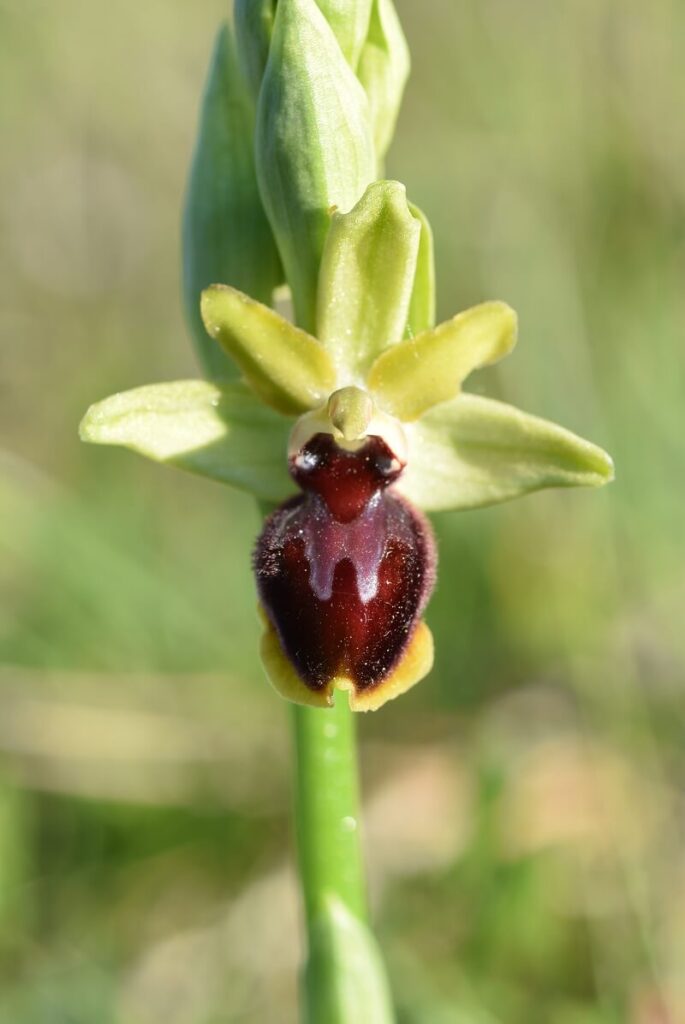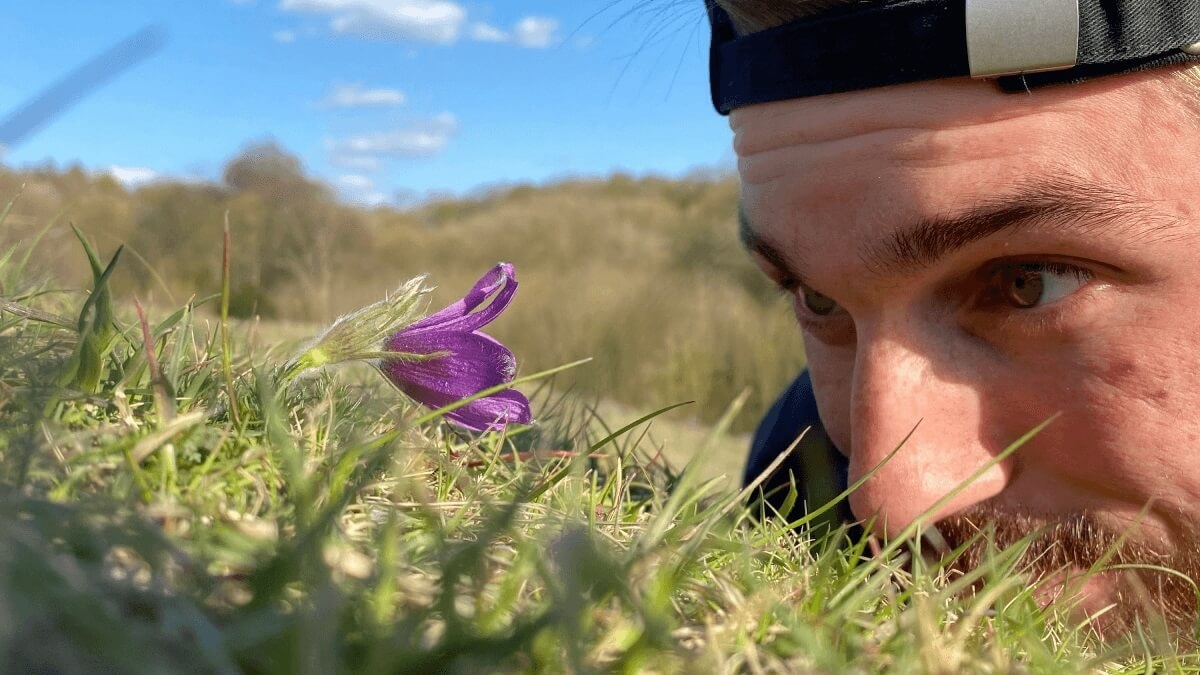Botanist Leif Bersweden’s fascination with plants has earned him almost 40,000 followers across Instagram and Twitter.
His passion for nature, which began when he was a child, has prompted him to pursue the world of plants and wildlife, while some of his fascinating posts about plants have gone viral.
In his new book, Where The Wildflowers Grow, you can discover why holly leaves are spiky, how some plants can change colour and why others submerge themselves underwater to survive.
“Plants are often dismissed as being boring, therefore people don’t get to hear of all the amazing things they do. I’ve taken everything plants do and distilled it into bite-size chunks to grab people’s attention,” he enthuses.
Here, he unearths some fantastic facts about plants that may make you think differently about them.
1. Holly can make its leaves spiky
If Holly (Ilex aquifolium) finds its leaves are being nibbled by deer, it switches genes on to make them spiky when they regrow. So on taller Holly trees, the upper leaves (which are out of reach) have smooth edges, while the lower leaves are prickly 🤙 pic.twitter.com/J1qvjceXC5
— Leif Bersweden (@LeifBersweden) December 30, 2021
One of Mr Bersweden’s posts, which went viral, showed how Holly (Ilex aquifolium) responds to being nibbled by deer by growing spiky leaves. Taller trees may have smooth leaves at the top and spiky ones further down.
Read: Houseplants don’t just look nice
2. Forget-me-nots change colour
Forget-me-not fun fact: the yellow ring at the flower’s centre fades to white after pollination, signalling to insects there’s no more nectar 🤟 pic.twitter.com/Tz33daklzV
— Leif Bersweden (@LeifBersweden) May 14, 2021
The unpollinated flowers have a yellow ring, but as soon as they’ve been pollinated by bees or other insects, the ring changes colour to white. At that point the flower stops producing nectar, so the insects learn that the flowers with the white ring are no longer of use to them. “The flower is effectively colour-coding itself,” he enthuses. “It’s the plant’s way of ensuring all of its flowers get pollinated.”
3. Sundews are killers
View this post on Instagram
These small bright red plants that live on peat bogs have spoon-like leaves covered in red tentacles, each of which has a droplet of liquid at the end. They need to supplement their diets so they catch insects, which are attracted by the glistening liquid. As they get stuck and start struggling to get away, the plant detects the movement and will roll up its leaf tightly like a carpet, so that it strangles the insect. Then it uses enzymes to break down the insect, creating a nutritional fly soup, which it absorbs. It then unrolls the leaf again, ready to catch its next meal.
Read: Where to see the world’s strangest plants
4. Water soldiers submerge themselves to survive
View this post on Instagram
These aquatic plants grow around ditches, ponds and lakes, and look like tough versions of a spider plant. They float on the surface of the water, exposing a white three-petalled flower.
“One of the biggest challenges it has is having to deal with ice in winter, particularly in shallow ponds and ditches that freeze over. What it does – and this completely blew my mind – is avoids the problem altogether by submerging itself during the winter.
“It has air bubbles in its leaves that keep it buoyant, then towards the end of summer these air bubbles start collapsing and slowly start filling with water. When autumn arrives it starts to sink and over the course of weeks or months will sink under the water and settle itself on the mud at the bottom.
“It will spend the winter at the bottom, while the water freezes at the top, which acts as an insulator. There will still be oxygen in the water, which it can take through its leaves. In spring, the plant starts producing new leaves with fresh air bubbles in them, which makes the plant more buoyant, rising to the surface.”
5. Early spider orchids play the mating game with bees

“These plants have evolved to exploit the sexual desire of male solitary bees,” he explains. “The orchid has evolved a smell exactly the same as a virgin female solitary bee and matches the scent compound of a mating female. The male bee smells what he deems to be a female, but it’s the orchid, which has also evolved to look and feel like an insect. It’s covered in hairs – it’s like a furry chocolate brown velvety flowers with a band of metallic blue across the middle, which mimics the sheen on an insect’s wing.
“The bee thinks it’s scored and attempts to mate with the flower and while this is happening the orchid drops its pollen on to the back of the bee’s neck. After a while the solitary bee becomes frustrated and buzzes off in search of a female partner and deposits the pollen on the next orchid flower and pollinates it. This entire fraud is masterminded by the plant.”
6. Broomrapes are plant vampires
View this post on Instagram
“Common broomrapes are sneaky, clever plants that have evolved to parasitise other plants. Their seeds in the soil lie dormant, sensing the chemicals around them. When they sense a suitable host species is nearby, they send out a little root-like structure which wiggles its way through the soil to the roots of the host plant.
“The broomrape will siphon off everything it needs from the host – all of its water, nutrients and sugars – and because of this it doesn’t need to produce any chlorophyll, which is the pigment that makes plants green. The plant is completely brown, doesn’t have any leaves and just puts up a spike of brown flowers to get pollinated.”
The host plant doesn’t suffer too much because the broomrape is careful not to take too many nutrients because it wants to keep the host plant alive, he explains.
Read: Eight weird and wonderful houseplants
7. Ivy-leaved toadflax are upwardly mobile

These grow predominantly on walls, producing purple and yellow flowers. When the colourful flowers emerge, the stems moves towards the light, away from the wall, encouraging insects to pollinate them, he explains. When a flower is pollinated the chemistry changes so it moves away from the light, bending back towards the wall and finds the smallest, darkest crack it can and shoves its flower in there.
“When the seeds mature, they are already in a dark space where they can germinate to produce the next plant. Over time, its offspring move up the wall. If you find an ivy-leaved toadflax at the bottom of a wall and come back a few years later, it will have shifted upwards.”
Can you offer any other fascinating plant facts? Why not share them in the comments section below?
– With PA


I’d wondered about the holly spikes, but all of the leaves on my holly tree are ferociously spiky. Even those on the top most branches have spikes that can perforate even my thickest overalls.